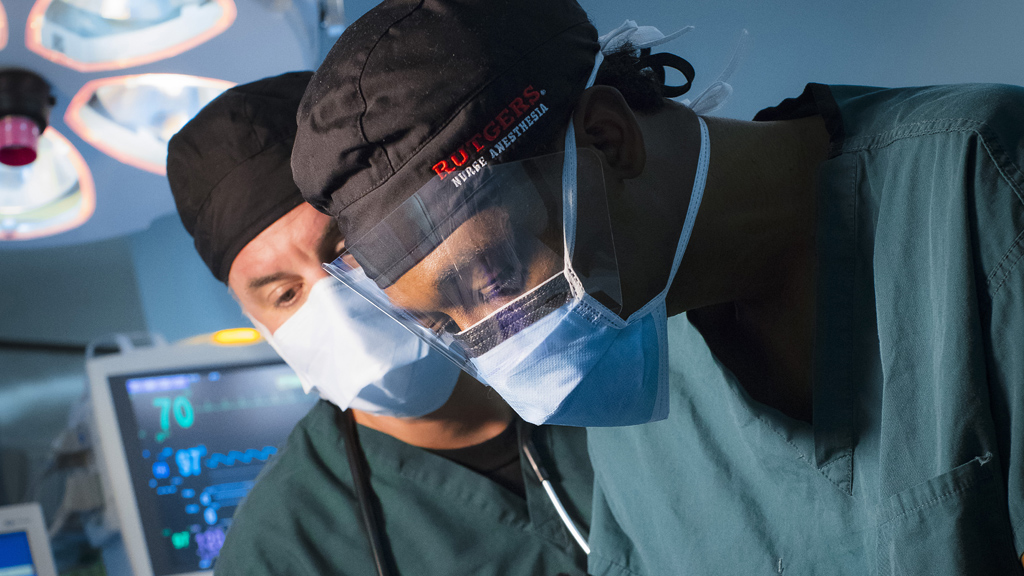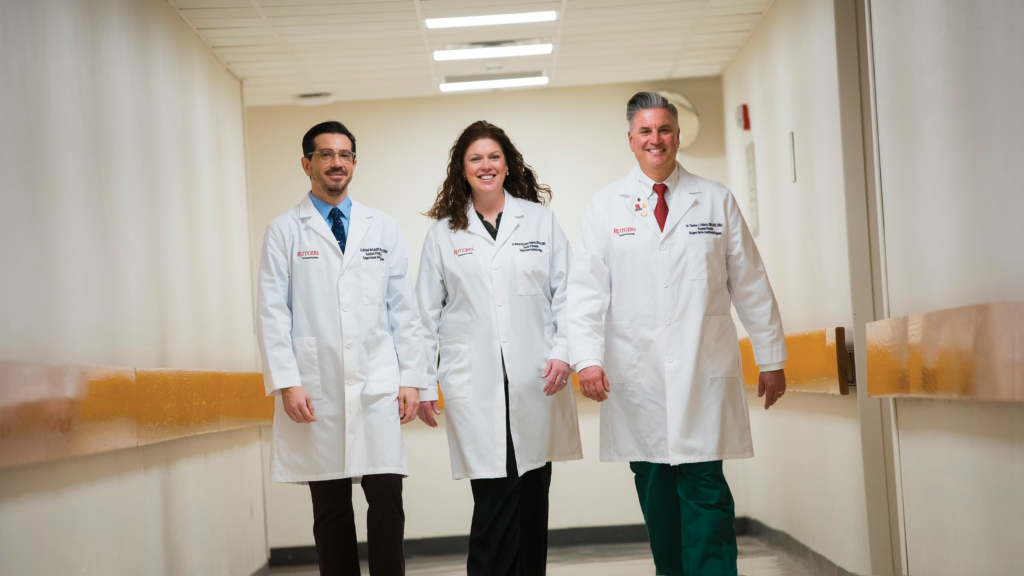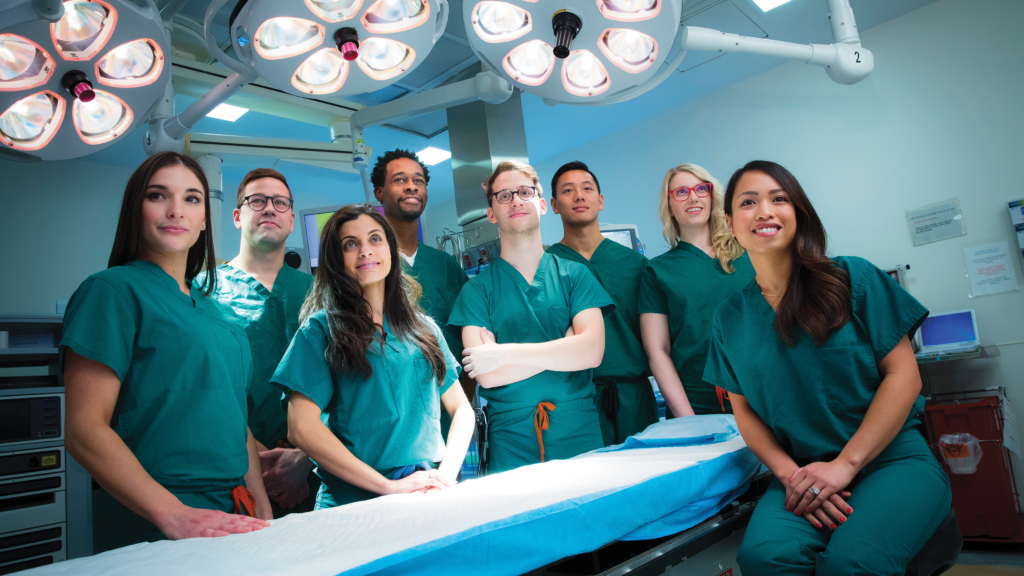Filling the Anesthesia Gap

At a time when anesthesia providers are in short supply, Rutgers School of Nursing offers the only program in New Jersey training the next generation of nurse anesthetists.
The idea of undergoing surgery without anesthesia is virtually unthinkable in the 21st century, but a shortage of anesthesia providers, especially in rural and low-income areas, threatens to lengthen the wait (and already has, in some places) for various elective surgeries, from joint replacements to angioplasty. Since 2004, Rutgers School of Nursing has helped to address this shortage, through its nurse anesthesia education program — the only one in the state of New Jersey. Graduates of the program receive a Doctor of Nursing Practice (DNP) degree, making them eligible to sit for the Certified Registered Nurse Anesthetist (CRNA) board certification exam. Once they are board certified, they are credentialed to work alongside surgeons as anesthesiologists do — determining which anesthesia agents to administer and how to deliver them, while managing a patient’s vital signs and pain levels throughout the procedure.
The Making of a CRNA
We do everything that an anesthesiologist does,” affirms Dr. Thomas Pallaria (DNP, APN, CRNA), assistant professor and director of Rutgers’ nurse anesthesia program. In fact, the most significant difference between the two types of practitioners is cost. According to a recent study by the American Association of Nurse Anesthetists, the average billable amount per procedure for an anesthesiologist
is $470 versus $307 for a nurse anesthetist. In an era of skyrocketing medical expenses, that difference is significant.
Since its inception, Rutgers’ graduate program in nurse anesthesia has turned out 250 nurse anesthetists, who’ve gone on to work in hospitals and clinics across the
U.S. Pallaria has helped introduce CRNA practices at both Newark Beth Israel Medical Center and St. Barnabas Medical Center. Today, there are some 1,000 CRNAs working in New Jersey and 54,000 across the country, and their numbers are growing. The need for them is likely to grow as well, as the Baby Boom generation ages and requires an increasing number of surgical procedures.
As it happens, nurses were administering anesthesia long before medical doctors, most notably on Civil War battlefields. “We’ve been providing anesthesia care in this country for 150 years,” says Pallaria, who received his doctoral degree from Rutgers after completing his master’s degree in
anesthesia at Columbia University in 2000. Before that, he was a critical care nurse for four years, but, he says, “I was looking for a more science-based profession—I’m a very precise person and anesthesia is a precise science, so I naturally gravitated toward it.”

Preparation and Precision
Rutgers’ three-year doctoral program in nurse anesthesia, offered at the nursing school’s Newark campus, affords the kind of intensive education a precise science like anesthesiology demands. The program includes a challenging practicum requiring at least 2,600 hours of clinical work with more than 20 partners across New Jersey and the New York metropolitan area. During their clinical training, nurse anesthesia residents administer general, regional, and local anesthesia through a
variety of techniques, including intravenous infusion and epidural and spinal blocks, in specialties ranging from obstetrics and pediatrics to neurosurgery and cardiothoracic surgery.
Merging Science and Empathy
Like nurses in every specialty, CRNAs tend to be particularly cognizant of their patients’ emotional needs. “A huge part of our job,” says Pallaria, “is allaying our patients’ fears.” Humor, he notes, is a tool he’s used throughout his professional life. “I can usually get them to laugh as they’re falling sleep and laugh when they’re waking up,” he adds. “We don’t just push medication and knock people out—we’re clinicians, number one.”
This combination of science and empathy has been put to the test during the COVID-19 pandemic. Nurse anesthetists once again answered the call and assumed leadership roles on the front line to work as part of a critical care management team—whether intubating patients in respiratory failure, inserting lines to establish hemodynamics, or working directly with intensivists and critical care nurses to manage the complex disease process that COVID-19 presented. “We had to adapt quickly, as all CRNAs must, to deliver excellent care to the most critical patients,” Pallaria says. “I have always been proud of my colleagues and CRNAs everywhere, and this difficult experience has only intensified my commitment to the profession and health care in general.”

